As a teenager, I remember seeing TV commercials featuring celebrities and athletes proudly wearing milk mustaches, gazing into the camera, and asking, “Got milk?”
As the grandson of the co-founder of the Baskin-Robbins ice cream chain, that question resonated with me. As the son of John Robbins, who walked away from an opportunity to head that chain for ethical reasons, I knew the answer that fit me.
“Yessir! I got almond milk!”
The “Got milk?” campaign, which ran from 1993 to 2014, made an effective and lasting impression on consumers. This is one reason why so many consumers, even today, strongly associate calcium with milk and dairy products.
But is this message valid? Are milk and dairy products the best places to get calcium? Or are other calcium-rich foods better for you? And is calcium really as important as we’ve been told it is?
What’s the Role of Calcium for Your Health?

Calcium is an essential mineral for human health. It’s primarily stored in your bones and teeth (it’s what makes your pearly whites so strong). And you have more calcium inside you than any other mineral. That works out well because your body needs calcium to perform several essential functions.
Calcium helps:
- Carry messages between your brain and the rest of your body
- Your nerves and muscles move
- Transport enzymes and hormones through your blood to where they need to go
- Keep your muscles, nerves, and blood vessels functioning well
- Maintain a healthy blood pressure
Calcium also enables the most critical muscle in your body — your heart — to receive signals and contract. Without calcium, your heart wouldn’t work properly!
How Much Calcium Do You Need?
According to the US FDA, the Recommended Dietary Allowance for calcium intake is as follows:
| Birth to 6 months | 200 mg |
| Infants 7–12 months | 260 mg |
| Children 1–3 years | 700 mg |
| Children 4–8 years | 1,000 mg |
| Children 9–13 years | 1,300 mg |
| Teens 14–18 years | 1,300 mg |
| Adults 19–50 years | 1,000 mg |
| Adult men 51–70 years | 1,000 mg |
| Adult women 51–70 years | 1,200 mg |
| Adults 71 years and older | 1,200 mg |
| Pregnant and breastfeeding teens | 1,300 mg |
| Pregnant and breastfeeding adults | 1,000 mg |
The FDA says that older children and teens need 1,300 mg of calcium per day. Pregnancy, lactation, and menopause can also increase calcium needs, as can reaching your older years when age-related bone loss starts to occur.
However, these numbers may be higher than necessary. The National Health Service of Britain recommends considerably less daily calcium — only 700 mg — for non-lactating adults aged 19 to 64.
So, how much calcium you need may depend on which side of the pond you stand! (Or maybe, just possibly, it could also depend on how much food industry lobbyists influence your government’s bureaucrats.)
Calcium Myths and Controversies You Need To Know
Calcium may feature prominently in traditional and social media conversations about health and nutrition, but that doesn’t mean everything you hear is correct. The more noise about a topic, the higher the likelihood that much of that information comes from those with a profit-driven agenda: trade organizations, food companies, and industry-manipulated governments.
So, what are some of the most widespread myths about calcium that you will likely encounter?
Myth #1 — Dairy Products Are the Best Sources of Calcium

Dairy is high in calcium. But contrary to popular belief, high dairy consumption doesn’t necessarily correlate with better bone health.
In fact, osteoporosis and bone fractures are most common in the United States, Finland, Sweden, and the United Kingdom — all countries where people consume the most dairy products.
Eating a lot of dairy products can also increase the risk of certain cancers, such as prostate, breast, lung, and ovarian. This may be due to sex hormones like estrogen and other growth factors naturally present in milk.
Dairy products deliver much more than calcium. In addition to those sex hormones, they also contain animal proteins (which, despite their hefty marketing budget, might not be a great friend to your health after all), pesticides, and even antibiotics.
Of course, there are other downsides to the industrialized dairy industry, such as its cruelty to animals and damage to the planet.
Find out more on the truth about dairy.
Myth #2 — Getting Enough Calcium Is the Most Important Thing You Can Do for Bone Health
Calcium is important for bone health, no question. But calcium isn’t the only thing your bones need to be strong. Exercise plays a critical role, too.
Weight-bearing activities send signals to your bones, encouraging them to grow denser and stronger to handle the stress. Researchers have found that resistance and high-impact exercise can significantly improve bone density and reduce the risk of fractures, proving that movement is just as essential as minerals for lifelong bone strength.
Exercises to focus on for bone health include weight-bearing activities, such as walking, running, tennis, dancing, stair-climbing, and weight-lifting. (Maybe someone should invent a new sport that combines dancing, stair-climbing, and weight-lifting. On second thought, maybe not.)
Vitamin D — which you make with the help of the sun — also turns out to be pretty darn important for your bones.
People in many Asian, South American, and Sub-Saharan African countries consume around one-third the amount of calcium that Americans do, yet bone fractures are rare in these countries. How is this possible? One plausible theory is that, due to their geographic locations and lifestyles, they have much higher exposure to sunlight, which naturally increases vitamin D levels.
Most people can get the vitamin D they need by spending just about 15 minutes per day in the sun. Or, to be safe, you can take a vitamin D-containing supplement.
Vitamin K2 is another nutrient that helps regulate calcium balance in the body and is important for maintaining bone health. It may help regulate bone mineral density and reduce the risk of fracture, particularly in postmenopausal women, one of the most at-risk populations for osteoporosis.
Myth #3 — Everyone Should Take a Calcium-Containing Supplement
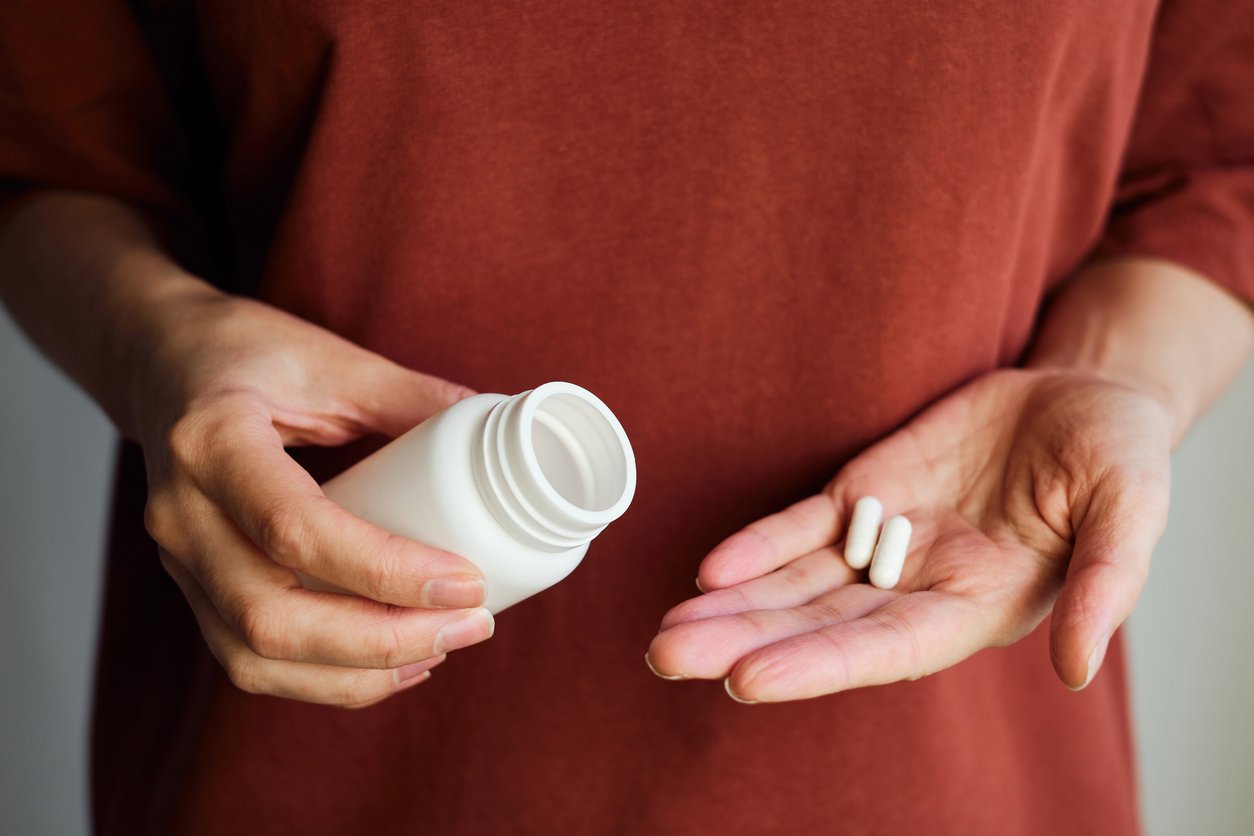
Many people, including more than half of US adults, take calcium supplements to help keep their bones strong as they age. Osteoporosis affects over 10 million adults in the US and more than 200 million people worldwide. The majority of cases are in postmenopausal women and the elderly, who are at an increased risk for fractures in their spine, hips, and wrists. Postmenopausal women are at a higher risk for calcium deficiency due to hormonal changes that accelerate bone loss.
Vegan postmenopausal women may particularly benefit from taking calcium supplements. The Adventist Health Study 2 tracked more than 34,000 people for an average of 8 years. During the study, 679 hip fractures occurred. Vegan women were found to have a 55% higher risk of hip fractures than nonvegetarians.
Interestingly, this increased risk was not observed in men. However, among vegan women who were supplemented with both calcium and vitamin D, the elevated risk disappeared, putting their fracture risk on par with that of women following other dietary patterns, including omnivores.
While calcium-rich plant foods can provide significant calcium, it’s often challenging to consistently meet the increased requirement of 1,200 mg per day through diet alone — especially if you’re mainly getting your calcium from high-oxalate greens (more on this below). In such cases, appropriate calcium supplementation, alongside vitamin D for enhanced absorption (and vitamin K2 to help ensure the calcium makes its way into your bones (more on that below, too), not your arteries, may be helpful to support bone health and reduce the risk of osteoporosis.
The main forms of calcium found in supplements are calcium carbonate and calcium citrate. If you decide to supplement, the type and amount you need depends on how much you already get from food and if you have any absorption issues. In general, calcium is best absorbed with food and when taken in amounts under 600 mg at a time.
The body isn’t designed to absorb a sudden calcium deluge, so it seems you might be best off, if you’re going to supplement, getting just the amount you need to complement your dietary intake — and spreading it out over two daily doses. For example, if you’re getting 800 mg daily from food and want to get to 1,200 mg, you might take 200 mg of calcium twice daily.
But there are some downsides to calcium supplementation, so if you’re not a postmenopausal woman, research suggests it might do you more harm than good.
Calcium Supplements and Cardiovascular Disease
Starting in 1995, the National Institutes of Health-AARP Diet and Health Study tracked 388,229 men and women aged 50–71 for an average of 12 years. More than half of the men and 70% of the women took supplemental calcium. The researchers found that high intake of supplemental calcium was linked to increased risk of cardiovascular disease death in men but not in women. It turns out that calcium supplements can raise blood calcium levels, but not all of that calcium ends up where it’s needed. Some may deposit in your arteries, potentially leading to stiffened arteries and higher blood pressure. Both of these contribute to the development of heart disease.
To make calcium supplementation more effective and safer, it’s important to pair it with other key nutrients. Vitamin D increases calcium bioavailability, helping your body absorb and use it more efficiently. Meanwhile, vitamin K2 plays a critical role in directing calcium to where it’s needed — your bones — and away from places like your arteries.
It’s also important to note that calcium supplements can prevent certain medications from working. Specifically, they can reduce the absorption of certain antibiotics, anticonvulsants, and even, ironically enough, medications used to treat osteoporosis.
9 Plant-Based, Calcium-Rich Foods
So, if dairy products aren’t necessarily the best sources of calcium, and if calcium supplementation can come with some drawbacks, the question is: Where should you ideally get your calcium?
Below are some of the most naturally calcium-rich plant foods. (All calcium amounts obtained from MyFoodData.)
1. Soy
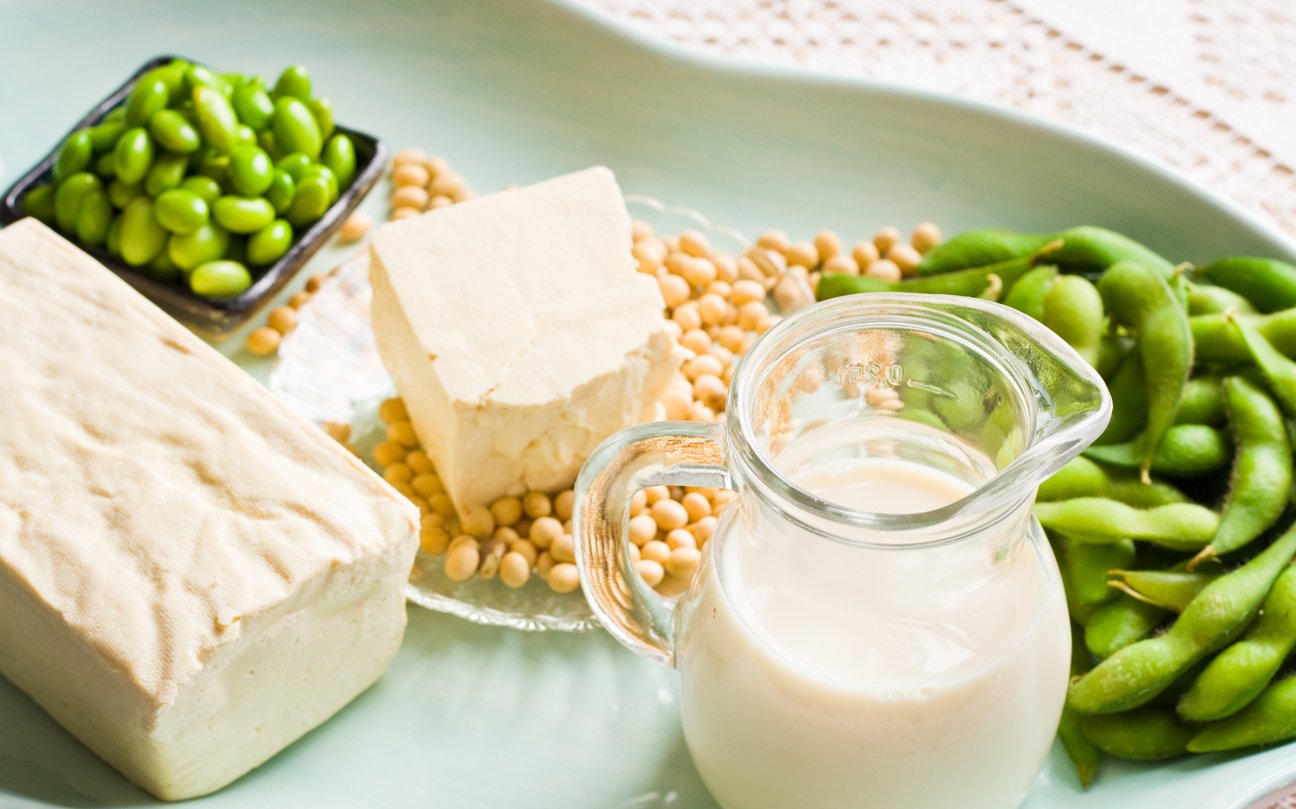
- ½ cup of tofu (made with calcium sulfate) = 861 mg calcium
- 1 cup of unsweetened Edensoy organic soy milk = 40 mg calcium
- ½ cup of edamame = 102 mg calcium
Organic soy foods that are unprocessed, like soybeans or edamame, or lightly processed, like tofu and soy milk, are high in calcium and great for many recipes. And tofu, when it’s made with calcium sulfate, is something of a calcium superstar (¾ cup can meet your entire calcium RDA!). Use extra-firm tofu in stir-fries, pasta dishes, tofu scrambles, or even sliced on sandwiches. Try silken tofu in smoothies, dips, and sauces.
You can drink soy milk by itself or use it as you would cow’s milk, for example, in cereal, as a base for smoothies and sauces, or baking.
Edamame, or green soybeans, can be purchased in the frozen section of many markets. They are available in pods or pre-shelled. Edamame can be added to salads, grain bowls, or homemade hummus.
For more on soy, read our article, Soy Facts: Is Soy Healthy or Harmful?
2. Seeds
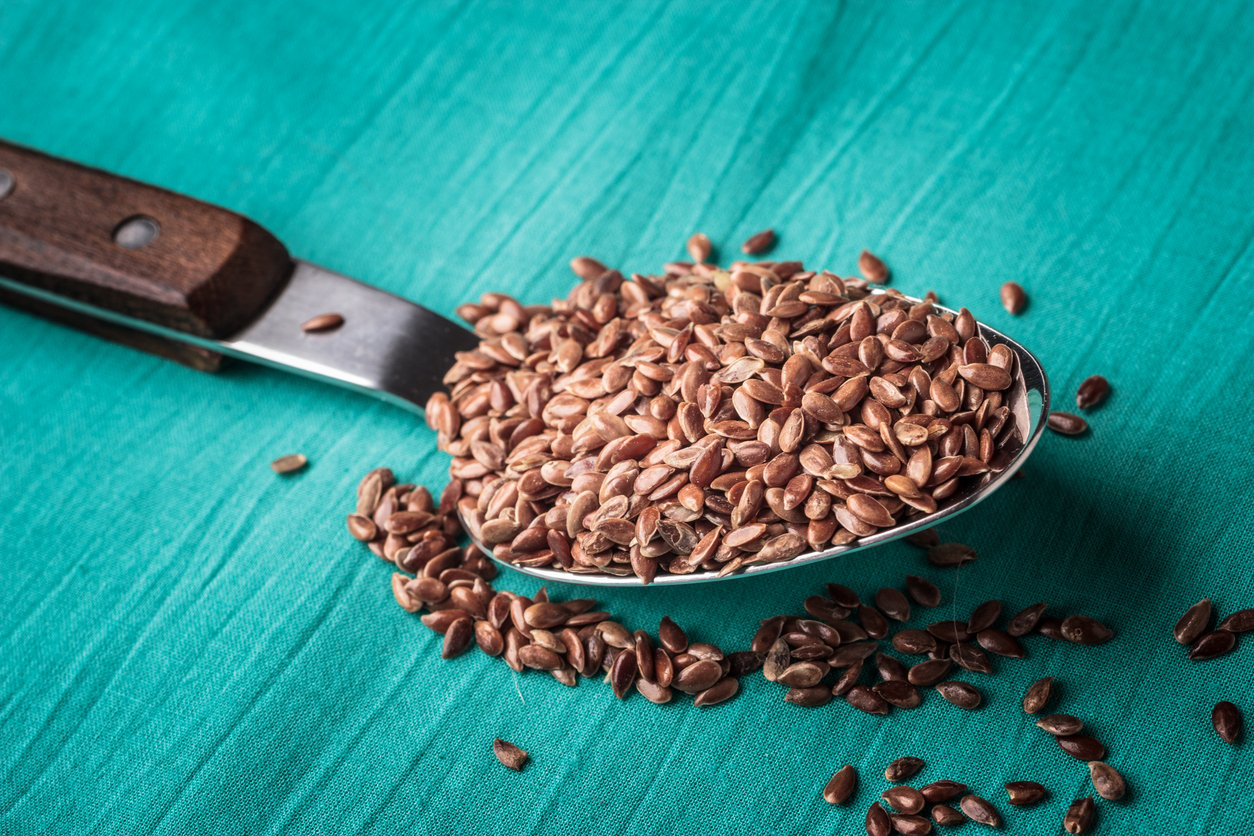
- 1 ounce sesame seeds = 280 mg calcium
- 1 ounce chia seeds = 180 mg calcium
I love to keep a variety of nuts and seeds in the pantry. I sprinkle sesame seeds on a salad or roasted veggies. Chia seeds are great in smoothies, oatmeal, or ground and sprinkle on almost everything. (Not your dog or cat, however — that’s not what they mean by “chia pet.”)
If you prefer a spread, tahini (sesame seed butter) offers 130 mg of calcium in just 2 tablespoons. That’s about 10% of what your body will need in the United States and 20% in Britain. (If you trust official government recommendations, that is!)
For more on sesame, read our article, What Is Sesame? Explore the Benefits & Uses of Sesame Seeds and Tahini.
For more on chia seeds, read our article, 9 Health Benefits of Chia Seeds and How to Eat Them.
3. Beans

- 1 cup navy beans = 125 mg calcium
- 1 cup baked beans = 154 mg calcium
- 1 cup red kidney beans = 116 mg calcium
- 1 cup pinto beans = 78 mg calcium
Beans are one of the best sources of calcium and are an incredibly versatile pantry staple (and you can use them in art projects and maracas). At under $2 per pound dry (or often less than $2 per can), they’re affordable, too. Add beans to soups, salads, burritos, pasta, casseroles, tacos, and pizzas.
For more on beans, read our article, The Benefits of Beans: Why They Deserve a Place in Your Diet.
4. Okra/Bhindi

- 1 cup cooked okra = 123 mg calcium
In addition to calcium, okra, also known as bhindi in India, is also a good source of magnesium, vitamin K, and folate — three nutrients that work synergistically with calcium to maintain strong bones. Its unique, slimy (or, if you are building your vocabulary, “mucilaginous”) texture can add thickness to soups and stews, making it a staple in many cuisines.
In addition to soups and stews, try roasting, baking, or air-frying okra for the most palatable (i.e., least mucilaginous) consistency.
For more on okra, read our article, What Is Okra & Is it Good for You?
5. Almonds
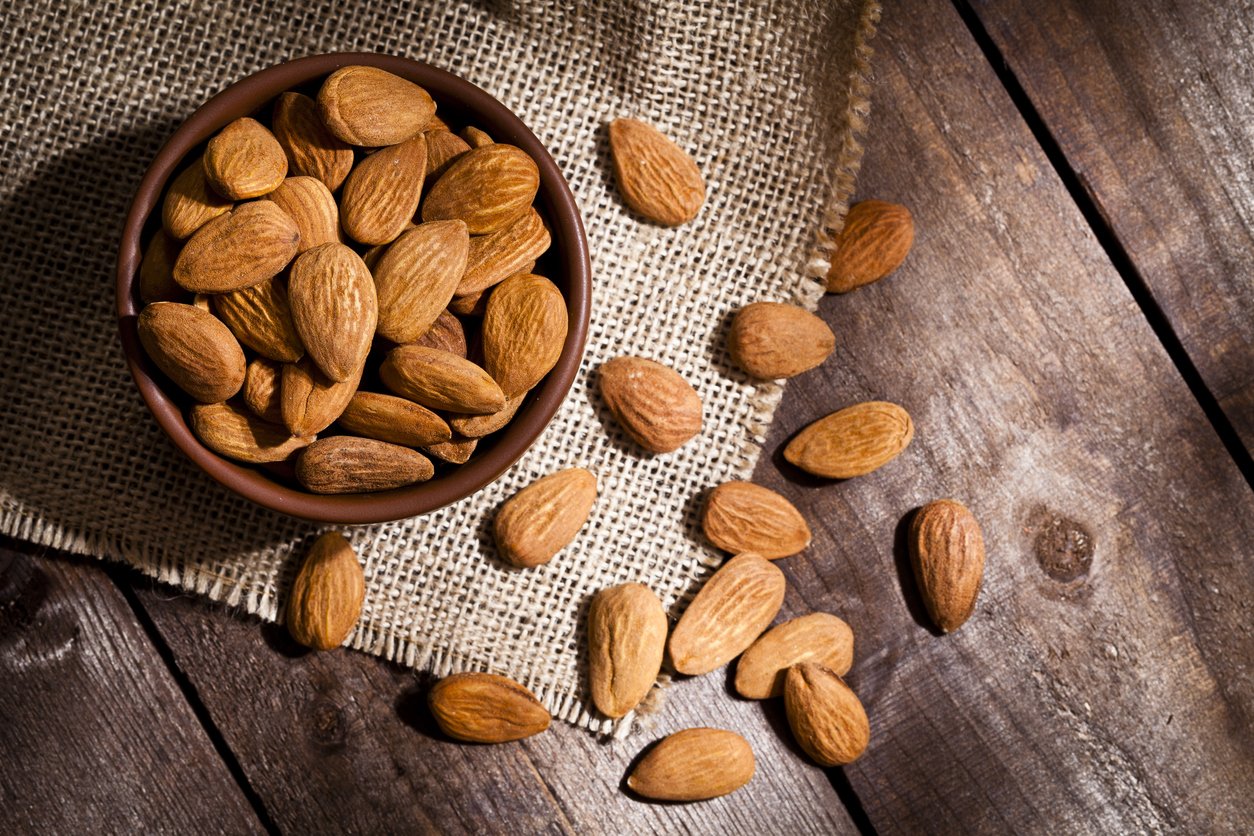
- 1 oz raw almonds = 76 mg calcium
- 1 Tbsp almond butter = 55 mg calcium
Almond butter is a great alternative to peanut butter. It’s easy to make with a high-speed blender or food processor. You can add raw almonds to smoothies, muffins, and pancakes or eat them as a snack.
For more on almonds and other nuts, read our article, Nut Health Benefits: You Won’t Believe How Good They Are for You.
6. Low-Oxalate Leafy Greens
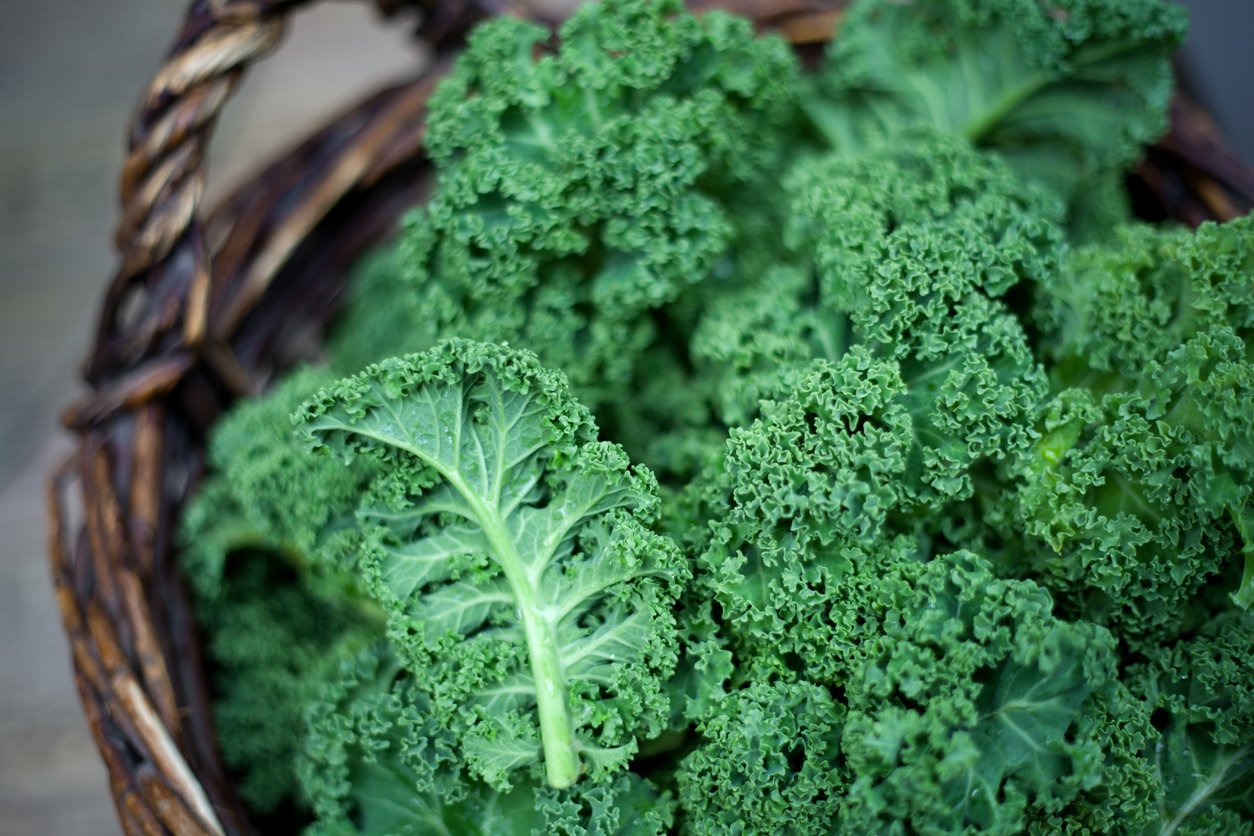
- 1 cup of cooked collard greens = 267 mg calcium
- 1 cup cooked bok choy = 158 mg calcium
- 1 cup cooked kale = 195 mg calcium
While pretty much all leafy greens are high in calcium, some contain high oxalate concentrations. These compounds (also found in other plant foods) can block calcium absorption. Oxalates can make otherwise highly nutritious vegetables — like spinach, Swiss chard, and beet greens — not-so-great sources of calcium.
Collard greens, bok choy, and kale have lower oxalate content. Mix these into salads, or try them sauteed or steamed.
Learn more about leafy greens in our article, Leafy Greens: How to Source, Wash, Store, & Prepare Them.
For more on oxalates, read our article, Are Oxalates Bad for You? And Should You Avoid Foods that are High in Oxalates?
7. Oranges

- 1 medium navel orange = 52 mg calcium
Oranges are famous for their vitamin C content and are also high in calcium. I can’t think of a better way to enjoy a juicy orange than to eat it raw.
For more on oranges, read our article, Are Oranges Good for You — or the Planet?
8. Broccoli Raab (Rapini)
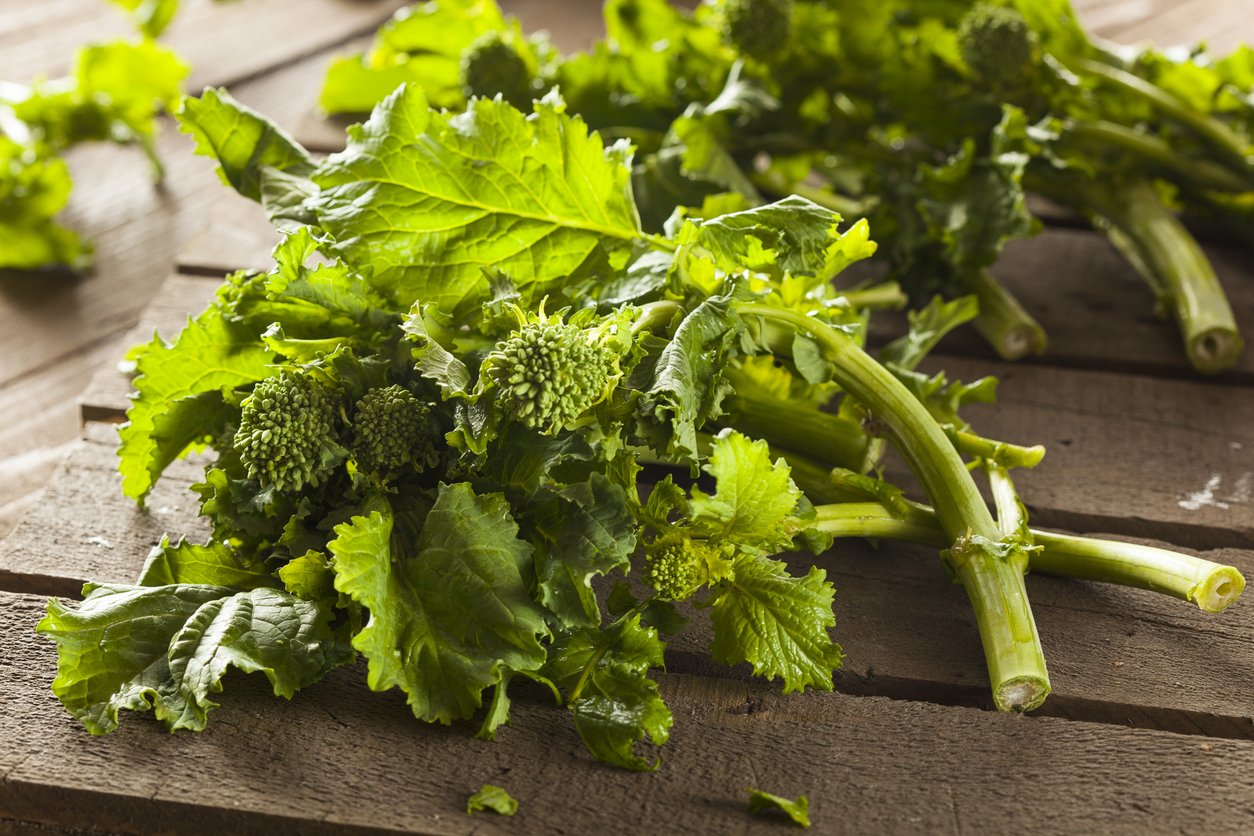
- 1 cup cooked broccoli raab (or “rabe”) = 185 mg calcium
Broccoli is a decent source of calcium — coming in at around 40 mg per cup — but its cruciferous cousin and semi-namesake broccoli raab (also known as rapini) more than quadruples that amount. It can be boiled, sauteed, or seasoned and roasted.
9. Dried Figs
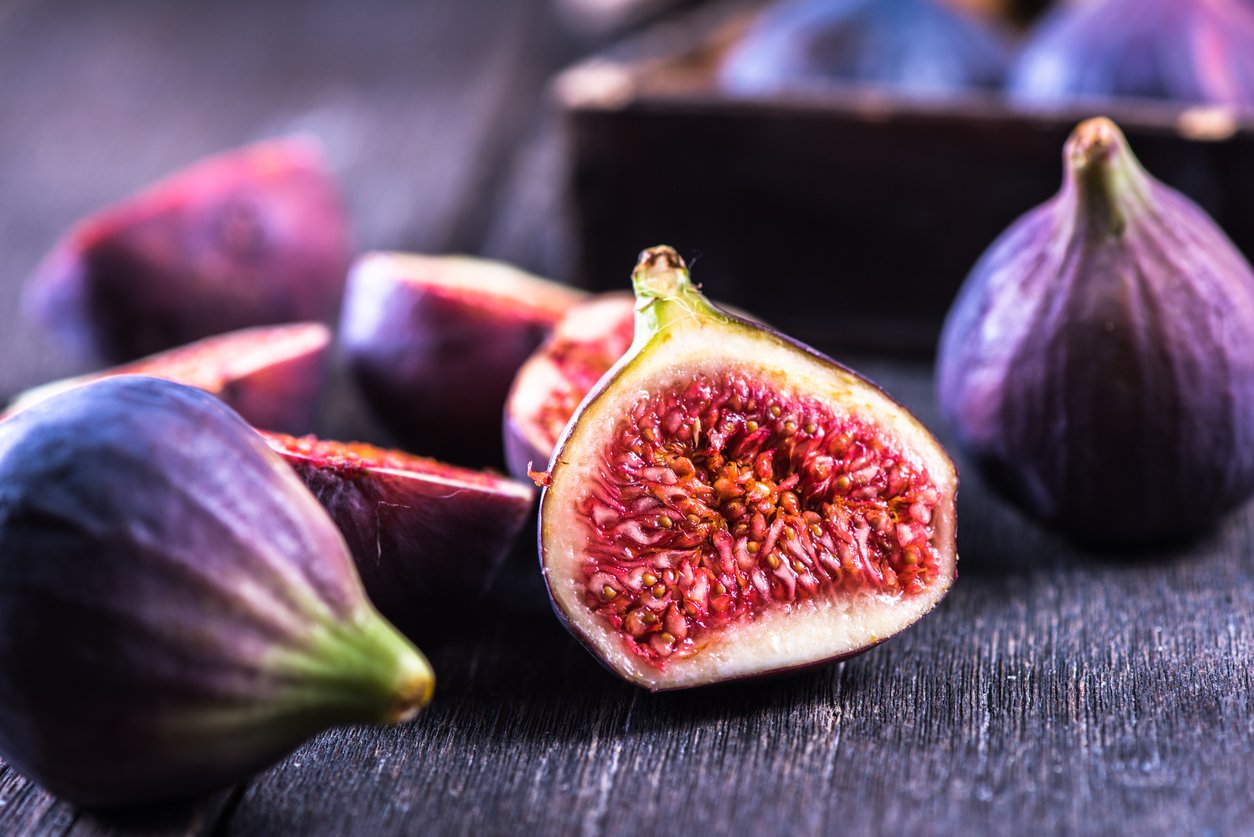
- 3 dried figs = 39 mg calcium
If you’re not a fan of eating dried figs plain, they’re great additions to baked goods, like muffins, breads, and scones. You can also use them to sweeten and add texture to smoothies.
For more on figs, check out our article, Figs: Are They Good for You and the Planet?
What About Calcium-Fortified Plant Milk?
Most plant milks are fortified with calcium, though some aren’t. Fortified plant-based milks can contain as much — if not more — calcium than a glass of cow’s milk.
If you drink plant milk, check the label, as the calcium content can vary between varieties and brands.
Of course, fortification is just a way of adding a supplement to food. The good news is that because it’s in food, it comes along with other nutrients — and it’s delivered in relatively small amounts that are typically spread out over time.
Do Any Factors Affect Calcium Absorption?
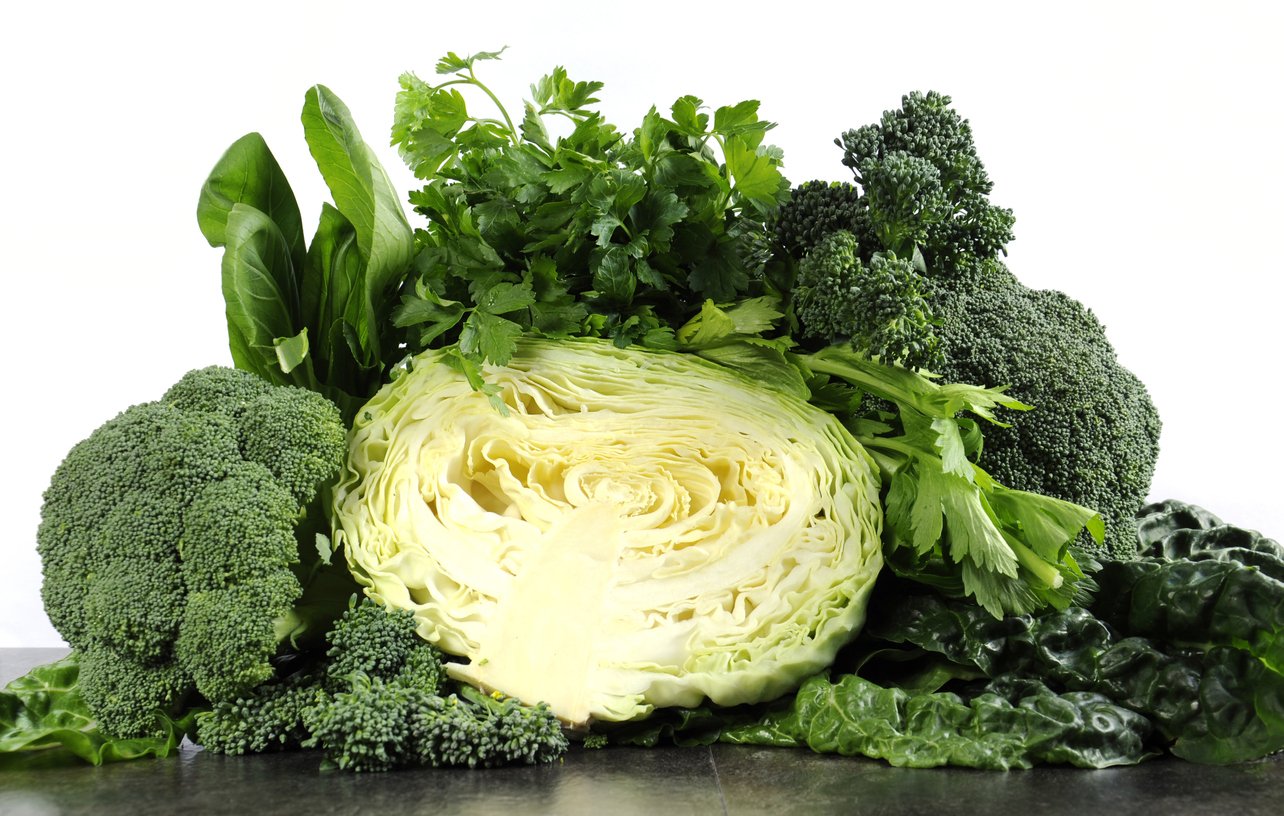
If you’re one of the people who struggles with your calcium levels, it could be that the problem doesn’t stem from not consuming enough calcium. It’s possible that you’re not absorbing it properly.
Several things can interfere with how much calcium you absorb:
- Eating too much sodium. Salt can increase calcium loss. If this is a concern for you, avoid high-sodium processed and packaged foods, rinse canned beans and vegetables (unless they are unsalted to begin with), and don’t add salt when cooking if you don’t need it. Many experts suggest keeping your sodium intake to under 1,000 to 2,000 mg per day, especially if you have heart disease or type 2 diabetes.
- Smoking and tobacco use. Ingesting tobacco can promote calcium loss by inhibiting absorption, reducing bone density, and increasing the risk of fractures. Other lifestyle factors common among smokers, such as inadequate physical activity, earlier menopause, poor diet, or alcohol use, can also contribute.
- Eating animal-derived protein. Eating a lot of animal protein can remove calcium from the bones and increase excretion. This doesn’t seem to happen when you eat plant proteins, such as beans, lentils, or grains.
- Eating mainly animal-derived calcium. A study in the American Journal of Clinical Nutrition found that calcium from low-oxylate leafy greens was absorbed at significantly higher rates than dairy. Calcium in Brussels sprouts was absorbed at 64%, and calcium in kale was absorbed at 50%, while calcium in cow’s milk was absorbed at a rate of only 32%.
- Not getting enough of other nutrients. For your body to properly absorb and use calcium, you need other nutrients, including vitamins D, C, K, E, magnesium, and boron.
- Getting your calcium only from oxalate-containing sources. Oxalates can inhibit calcium absorption, so oxalate-rich foods, such as spinach, rhubarb, beet greens, and Swiss chard, shouldn’t be relied upon for their calcium content (though they contain many other healthy nutrients!). Be sure to eat other calcium-rich foods, like the ones listed above, to ensure you get what you need.
What Happens When You Don’t Get Enough Calcium?
Your body regulates its calcium levels through biological checks and balances. If your blood calcium is low, your body will remove calcium from your bones to make up for it. This means that if you’re truly calcium deficient, you may not have obvious symptoms for a while because your body is trying to manage it.
Normal blood calcium levels are between 8.5 and 10.3 milligrams/deciliter (mg/dL), which means a calcium deficiency occurs at levels under 8.5 mg/dL. Another name for calcium deficiency is hypocalcemia.
While many people associate osteoporosis with not getting enough calcium, that’s only one way that low calcium levels may manifest. Other symptoms of more serious calcium deficiency include finger tingling and numbness, convulsions, and changes in heart rhythm, which can be very dangerous.
Calcium-Rich Recipes
Craving something delicious and nutrient-packed? These three recipes deliver big on flavor and calcium! From the creamy Silken Tofu Salad and the irresistible Almond Ricotta Pear Toast to the comforting Red Bean Gumbo With Okra, each dish is loaded with plant-based goodness that supports your bones and enhances your calcium intake. With nourishing ingredients like tofu, almonds, sesame seeds, red beans, and okra, these recipes make healthy eating feel like a true treat.
1. Almond Ricotta Pear Toast With Balsamic Fig Jam

Elevate your toast game with Almond Ricotta Pear Toast topped with a luscious Balsamic Fig Jam. Creamy almond ricotta pairs beautifully with sweet, tender pears and a tangy, herby fig jam for a flavor-packed bite. The almond ricotta and fig jam bring a boost of plant-based calcium, making this toast as wholesome as it is delicious. Perfect for breakfast, brunch, or a fancy snack, this dish is as nourishing as it is indulgent. Bonus: it’s so pretty you might want to snap a picture before diving in.
2. Silken Tofu Salad With Sweet and Savory Dressing

Silken Tofu Salad With Sweet and Savory Dressing is a creamy, vibrant dish packed with a refreshing crunch and bold flavors. The silken tofu melts in your mouth, while sesame seeds and a zesty dressing tie everything together for a satisfying bite. A good source of plant-based calcium from tofu and sesame seeds, this salad is as nourishing as it is delicious. Bright bell peppers, crisp cucumbers, and buttery avocado make it a feast for both the eyes and the palate. Perfect for a quick lunch or light dinner, it’s a simple way to enjoy calcium-rich plants!
3. Red Bean Gumbo With Okra
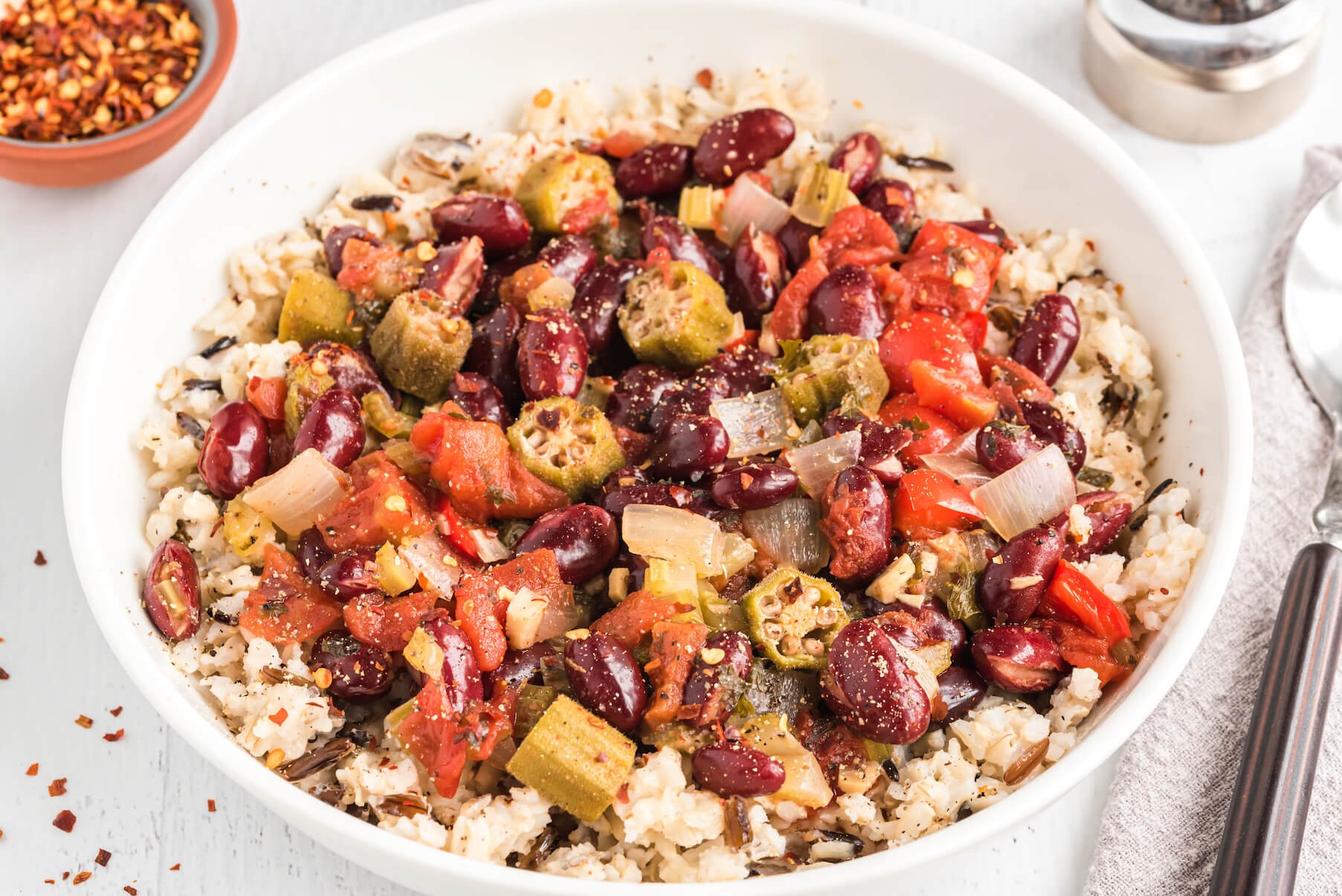
Dive into a bowl of Red Bean Gumbo With Okra, a hearty, flavor-packed dish that brings the taste of Louisiana to your table. Bursting with spices, tender red beans, and the rich texture of okra, this gumbo is satisfying and a delicious way to boost your calcium intake. Red beans and okra are powerhouses of this essential mineral, making each spoonful as nourishing as it is tasty. Served over fluffy brown rice, it’s comfort food with a wholesome twist. Perfect for cozy evenings, this gumbo is a celebration of bold flavors and plant-based goodness!
The Final Word on Calcium
It’s important to get enough calcium — for the health of your bones and heart — and to carry out many functions in your body.
So, do your body a favor and enjoy the best plant-based sources of calcium. They’re abundant in other minerals and nutrients, cruelty-free, and better for the planet! And if you’re a post-menopausal vegan woman, you may want to consider an appropriate-sized supplement that includes or is accompanied by vitamins D3 and K2.
Tell us in the comments:
- What are your favorite calcium-rich foods?
- What special precautions do you take to avoid osteoporosis?
Featured Image: iStock.com/ratmaner



